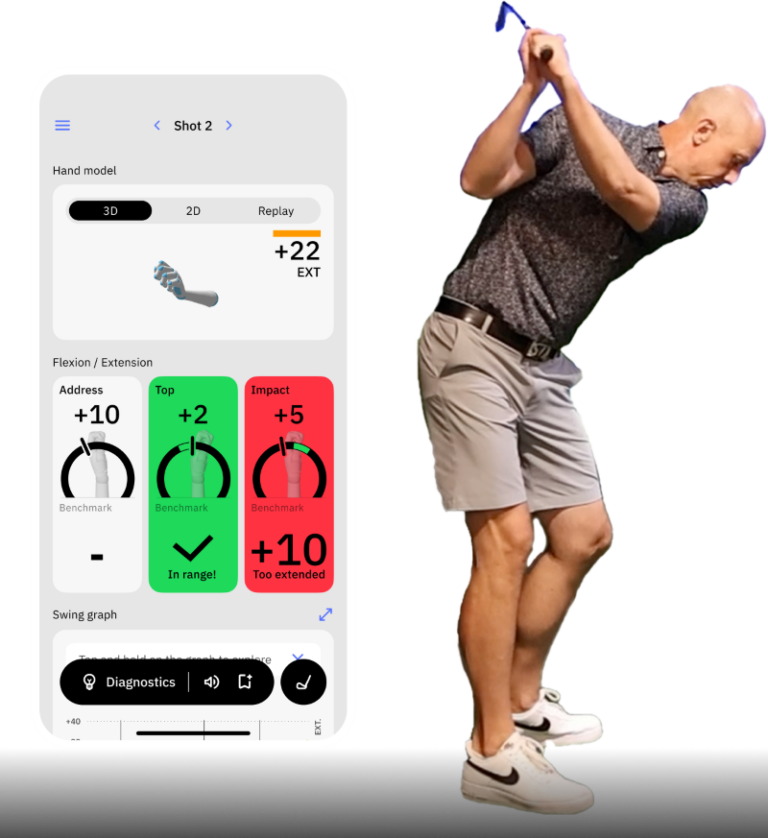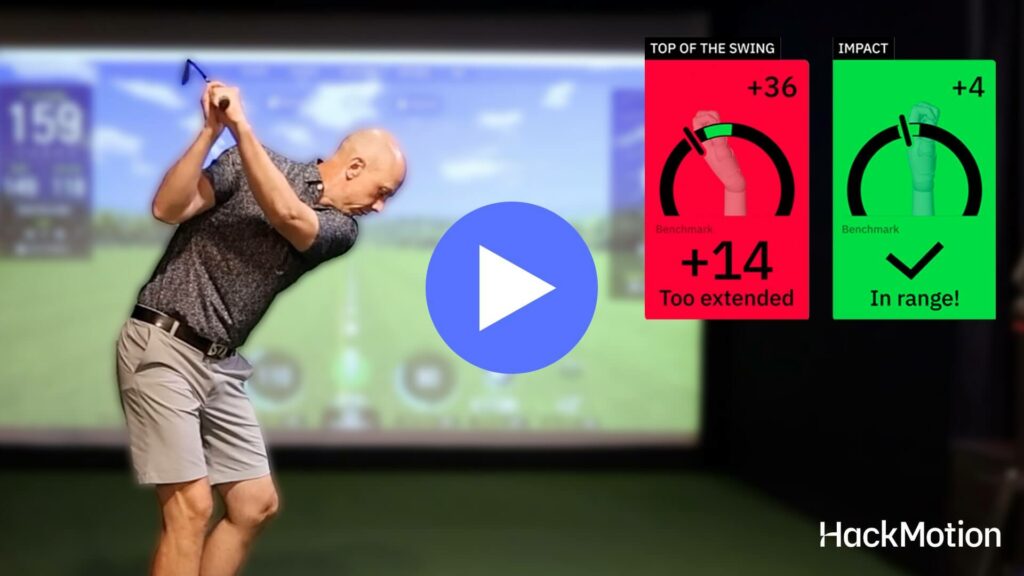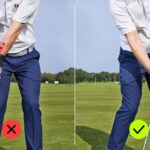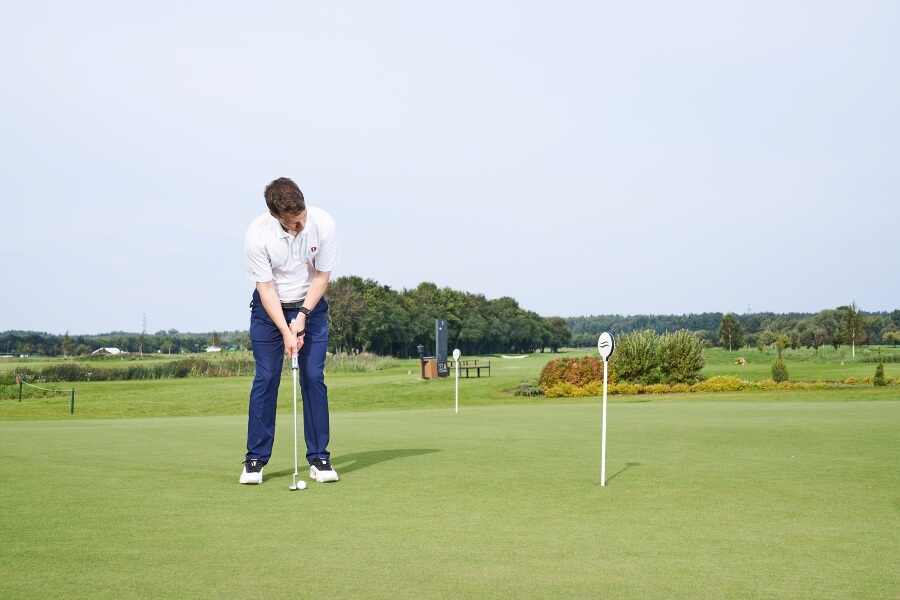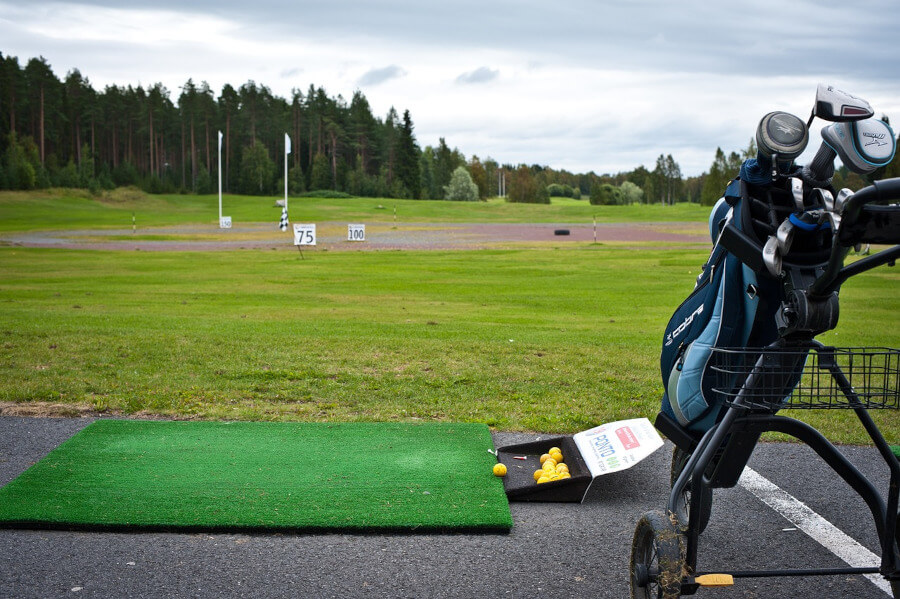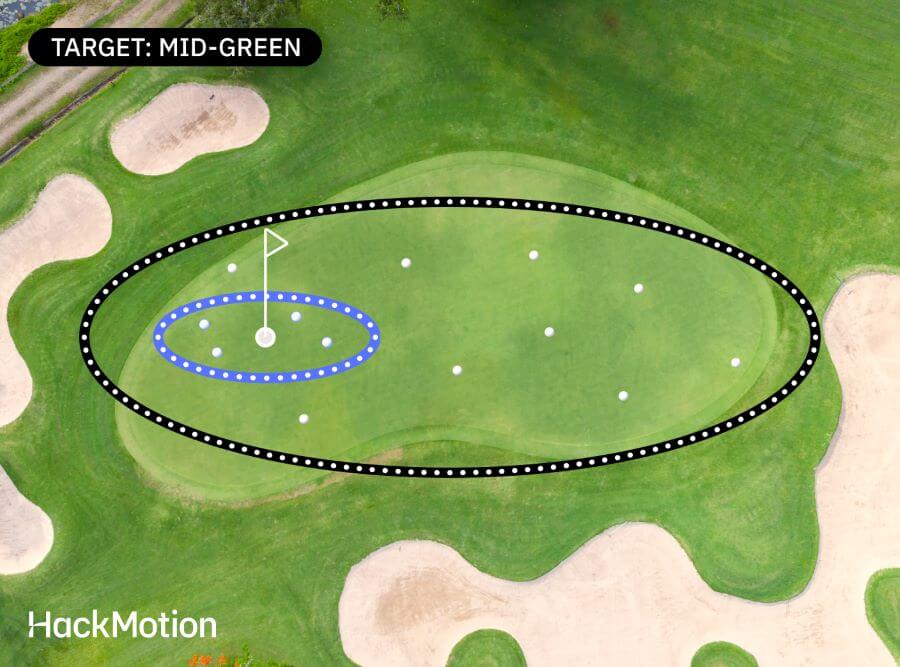Beat Golf Fatigue: Warm-Up, Nutrition, Routines, and On-Course Fixes
Many golfers don’t want to admit that their fatigue is holding them back. It’s a part of both the mental and physical game, and due to the nature of golf, everyone experiences it in some capacity.
A typical 18 holes means 4–6 hours outside, 8–12 km of walking, and 70–100 full swings, often in heat, wind, or on hills. Even touring professionals have plans in place to combat fatigue.
Use this guide to identify your specific type of fatigue — physical, mental, or both — and develop a plan to reduce or eliminate it.
Golf Fatigue (Key Takeaways)
Here is an excellent overview of what you can expect to learn from this comprehensive guide that many other pros and publications don’t know.
- Golf fatigue affects more than just your muscles; it affects your concentration and decision-making ability.
- Fatigue can manifest in many ways, including a predominant miss, loss of distance control with putting and chipping, or physical soreness.
- All parts of your game are at risk if you experience golf fatigue.
- Create a system to overcome and/or prevent golf fatigue with the suggestions below.
- Incorporate specific drills in your practice routine to deal with fatigue and prepare yourself for upcoming rounds.
Contents
What is Golf Fatigue?
Golf fatigue is the physical and mental wear that builds during a round and across repeated practice. It combines neuromuscular fatigue (reduced physical strength and coordination) and cognitive fatigue (slower decision-making and focus).
As fatigue rises, clubface control and posture slip, swing speed drops, and putting distance control suffers.
Common symptoms include back and forearm tightness, heavy legs, dehydration, headaches, and late-round hooks, slices, fats, or thins.
Signs of Golf Fatigue
- Late-round hooks/slices from face-to-path variability.
- More fat and thin shots from early extension or loss of posture.
- Putting could see heavier hands, distance-control errors, and a rising three-putt rate.
- Tight low back/hips.
- Calf/foot soreness.
- Grip slipping.
- Headaches or dizziness from dehydration.
If fatigue is affecting your swing and decision-making, structured golf coaching can help you build routines that keep you sharp for all 18 holes.
What Parts of Your Game are Most Affected by Golf Fatigue
Fatigue can impact any part of your game because it affects both your physical and mental state.
Each person will deal with the symptoms differently, but it’s important to know how they manifest directly in your golf game.
- Tee Shots – With diminished power, tee shots will start to come up short. Golfers also risk injury as they try to swing harder to regain their distance. Muscles could get strained, especially in colder weather.
- Iron Play – Your natural timing is one of the first things to go as fatigue increases. This timing is what produces a swing that makes clean and crisp contact from the fairway. Early or late wrist action is usually an issue. Hackmotion is great for teaching you how to use your wrists to their full advantage. With this knowledge, you’ll be more attentive to problems when they arise.
- Putting – Distance control is so important in putting, but if you are fatigued, you will have a tough time staying focused and getting a good feel for each putt. Missed putts will also add frustration, which will compound your fatigue.
How to Overcome Fatigue in Your Golf Game
The nature of golf means everyone will experience some form of fatigue in their game at some point.
If you want to shoot the best scores, then there are some things you can do to reduce your chances of fatigue and keep your body and mind sharp.
Start Every Round with an Efficient Warm-Up
Warm up the most important muscles and joints in your body with exercises such as:
- T-spine rotations
- Hip openers
- Ankle rocks
- Wrist circles
Next, prepare your body for big and frequent moving with:
- Walking lunges with rotation
- Skips/hops
- 3–5 progressive swings, each with wedge/iron/driver.
Emphasize sequencing, avoid overswinging, and prioritize balance over maximal effort on long rounds.
You can use Hackmotion on the range once you start hitting balls to ensure your swing is in the correct position. Since every day will be different, it’s a huge advantage to have the advanced technology Hackmotion provides during a warm-up routine.
Plan Your Nutritional Values
60–90 minutes before your round, eat and fully hydrate. This gives you time to digest before you start your warm-up routine.
During your round, be sure to keep water or a sugar-free sports drink at hand. It’s recommended that you ingest 0.4–0.8 L/hour depending on body size, heat, and sweat rate.
If you usually get hungry on the course, then bring small healthy snacks. You can eat 30–60 g/hour of carbs to give you energy without making you sleepy (e.g., half a sandwich + banana; or 1–2 chews/gels + nuts; or sports drink + jerky).
Try to avoid alcohol mid-round if you do struggle with golf fatigue; save it for the 19th hole.
Prepare a Proper Gameplan
Overthinking is a major contributor to fatigue. If you can limit your thinking out there, you’ll have more energy to put into your swing while being more consistent.
Every professional on the planet always prepares for a round with a game plan, and it will help you if you do the same.
You can prepare for a round ahead of time by choosing your shots and clubs for every tee shot. In most cases, you’ll be able to select your approach shot clubs as well.
Although this might change slightly based on the result of your tee shot, it will put your mind at ease when everything does go to plan, so you’ll have more focused energy to deal with issues.
Implement an Effective Pre-shot Routine
A good pre-shot routine is concise, repeatable, and anchored to clear cues so it holds up under pressure.
Always start behind the ball to collect information, choose a precise target, and pick an intermediate aiming spot. Visualize the ball’s flight and landing, then make one purposeful rehearsal swing that matches the intended tempo and contact.
Take a calming breath, step in, square the clubface to the spot, and balance your posture. Try using a simple trigger—such as a waggle or an exhale—to start.
Done well, a consistent pre-shot routine limits both mental and physical fatigue. It reduces decision-making at address, prevents overthinking, and shortens the time you hold posture, which saves the lower back and forearms.
Controlled breathing lowers heart rate and tension, while a fixed number of practice swings conserves energy across the round.
Core elements worth including, even with personal variations, are:
- Lie
- Wind
- Slope
- Elevation change
- Rollout
- Distance assessment
Increase Physical Fitness
Many golfers don’t want to hear this, but if you genuinely want to lower your scores, then getting in better shape will go a long way.
Of course, there are lots of golfers out there who enjoy the game recreationally, and that’s completely ok.
But incorporating a little workout routine throughout the week, even if you don’t golf, will reduce your golf fatigue, lower your scores, and make the game more enjoyable.
Here is an example of what just three days a week would look like:
- Day 1: Lower emphasis with split squats, trunk rotation, and kettlebell or medicine ball routine.
- Day 2: Focus on mobility and aerobic movements with 30–40 minutes to get the heart rate up.
- Day 3: Hit the upper pull/push movements, and finish with side planks.
Environmental and Travel Considerations
Reduce your golf fatigue by taking into account things that other golfers overlook.
Acknowledge Weather Concerns
To avoid heat issues, book earlier tee times, seek shade, bring cooling towels, and wear light clothing. Don’t forget your sunscreen, electrolytes, sunglasses, or anything else you need to beat the heat.
At the other end of the thermometer, you need to use layering as your primary defense. You can also use a slightly lower compression or a softer ball to maintain your distance. Spend a few extra minutes warming up to raise your muscle temperature.
Optimize Equipment and Apparel
What you wear and bring to the golf course could be giving you fatigue. Ensure you have Stable golf shoes with an adequate midsole. Always replace worn-out insoles when needed and consider orthotics for recurring foot/calf fatigue.
If you’re not driving a power cart and want to experience golf the true way without getting fatigued, then try using a push cart for longer or hilly courses. Those who want to carry their bag should always use the double strap to distribute the weight across their back and shoulders evenly.
Before hitting the links, make sure you only have the essentials. Keep your bag lean and light; no need to bring an umbrella and rain gear if the weather is nice, and definitely no need to bring 40 golf balls.
Use Practice Time Efficiently
Keep your practice sessions targeted and planned out. Hammering away at three or four large buckets because you played poorly last week could only make things worse. Have a practice routine in mind and stick to it for a few weeks.
Only make minor adjustments when needed, so you are always looking forward to your time at the range. Remember, this game is supposed to be fun first and foremost.
Drills to Help Stave Off Golf Fatigue
Use these drills to maximize your skill and increase your experience without draining your energy or causing any type of fatigue.
Optimal Point of Impact
With proper wrist position, posture, and weight transfer, you can improve your ball-striking consistency, reducing mishits and, therefore, golf fatigue both mentally and physically.
This simple drill requires only an alignment stick yet addresses all these key elements of the swing.
Optimal Point of Impact Drill – Step by Step:
- Take your usual stance by addressing a ball with an iron of your choice.
- Grip the alignment stick with your top hand so it runs down the shaft toward the ground as an extension of your lead arm.
- There should be a gap of an inch or two between the alignment stick and the hosel of your iron.
- Take practice swings while maintaining this gap. If the gap shrinks or widens, you know your wrists are too active.
- Use Hackmotion to identify which wrist is operating efficiently and which needs improvement.
Improved Driver Swing Plane
Keeping fatigue at bay is much easier when you’re driving the golf ball well. The best method is to focus on a neutral swing path.
Too many golfers are steep with their driver swing, which leads to excessive spin and inconsistent direction.
A neutral swing plane ensures your bad shots won’t be that bad, and your good shots will be really good.
Improved Driver Swing Plane – Step by Step:
- Take your normal stance and place a golf towel across your chest, with each end tucked under each arm.
- Take a few practice swings that should only be half or three-quarter swings.
- You can hit balls with the towel in place so long as it stays in place.
- This ensures you will take the club back along a neutral path and also attack the ball at a good angle.
Make More Short Putts
It always puts your mind at ease when you can confidently make short putts. One of the most frustrating things in golf is a three-putt, so to avoid that, do this drill.
Make More Short Putts – Step by Step:
- Set up two paper cups about eight inches in front of your ball.
- They should be set about three inches apart and act as a ‘gate’ for the ball to pass through.
- Ensure you pick a straight putt so you can focus on getting it started on the correct line, through the gap between the cups.
- Once you’re comfortable with the cups 8 inches in front of you (you can easily make 8-10 in a row), move them farther away to 10 or 12 inches to challenge yourself more.
Final Thoughts
Fatigue is only a mystery to those new to the game who think it can’t happen. You see pros all the time eating a banana or drinking water while on the course in an effort to prevent their own fatigue. Now you have all the information you need to take this excuse off the table and play the best golf of your life.
Make sure you have technology on your side to pinpoint issues and keep you focused. Hackmotion is one of the most advanced tools on the market today, as it helps with all facets of your game. It will make personalized drill suggestions based on your movements and keep track of your results.
The delicate sensors and easy-to-use app make this like having your own dedicated golf coach at your side for every step. Keep yours close by for all your practice routines and start lowering your scores today.
